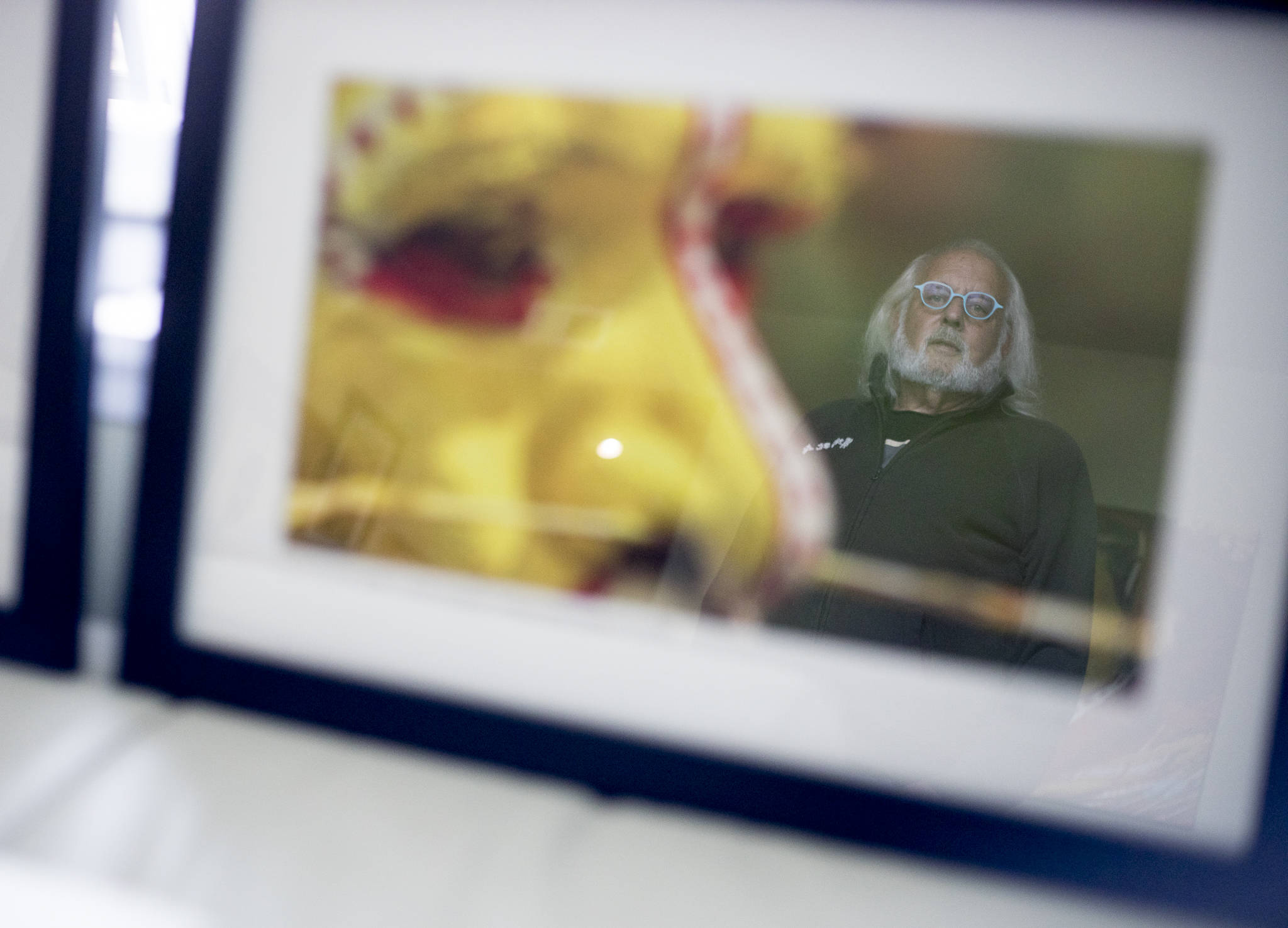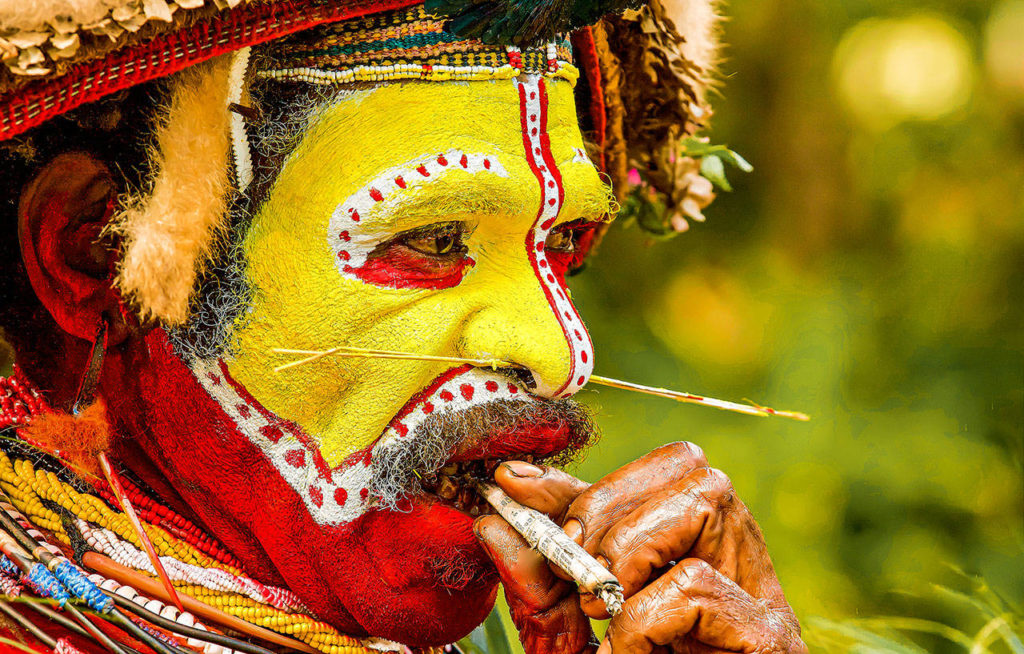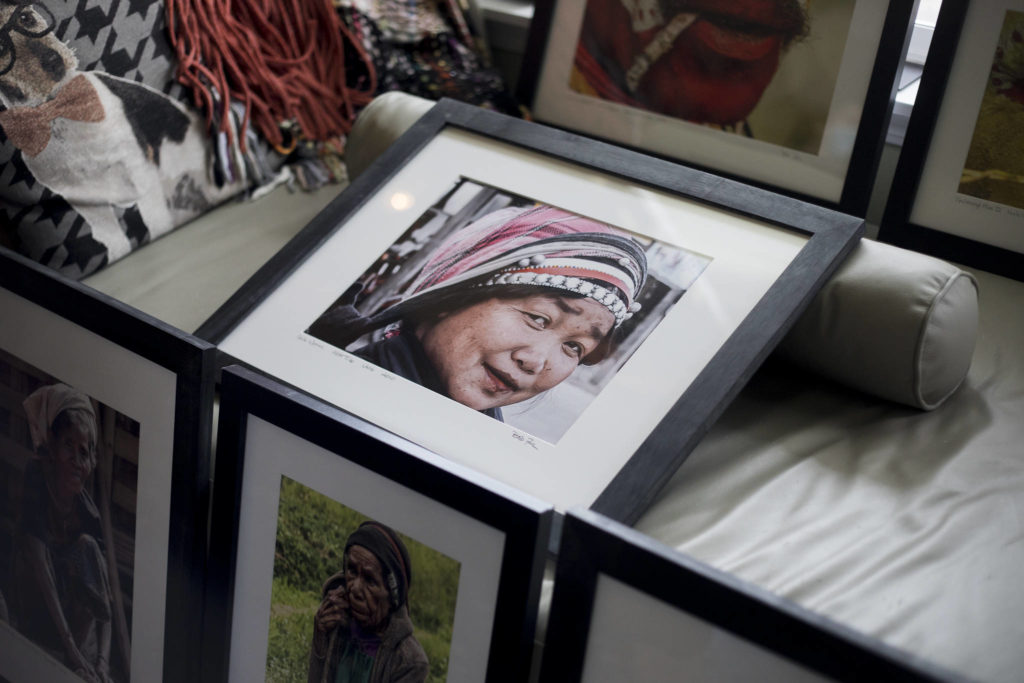EVERETT — Photographer Bob Fink, the Schack Art Center’s Artist of the Year, spent two years working on a solo exhibition he thought would open Thursday.
Then a racial equity consultant advised the center that showing Fink’s exhibit, “Indigenous Peoples: Photos From the Ends of the Earth,” was “inappropriate” and likened displaying the images as presenting “monkeys in a zoo,” according to a text sent by a staff member.
As a result, the Schack Art Center administration informed Fink two weeks ago that his planned exhibition, which includes photos of ancient tribes in Ethiopia and Papua New Guinea, would be postponed until next year.
An Everett-based photographer and filmmaker, Fink, 72, had selected more than 100 images taken throughout his 30-year career.
“This whole thing really isn’t about me — I just happened to get caught in the middle of it,” Fink said during an interview at his art-stuffed Everett condo last week. “Is it censorship? Are they censoring what people can see? If so, then that’s a problem. This is what I’ve prepared, this is what I want to do, these are images that I think represent me.”
The Schack recently contracted for staff and board members to train with Bernardo Ruiz and Tami Farber of Racing to Equality, a Seattle-based consulting firm that says it works with governments and businesses to improve racial equity policies and practices.
The goal, according to Ruiz, the firm’s co-founder, CEO and co-principal, was to support the gallery’s “advancement of equity, inclusion and art justice.”
Farber, a lead associate, most recently served as the senior director of Equity, Training and Development for Leadership Snohomish County.
After Schack asked Racing to Equality to review Fink’s exhibition, gallery director and chief curator Carie Collver sent a text message to Fink that he shared with The Daily Herald.
“I just got off the phone with Bernardo, and he said it would be inappropriate for us to show them — he likened it to monkeys in a zoo. He said it would be bad for both of us, but he liked the idea of sprinkling pieces in with your other work. I’m so sorry, Bob, that this has all come up right before your show. If we had known what was going to happen with the world right now two years ago, we could have prevented all of this.”
Contacted by The Daily Herald, Collver and Schack Executive Director Judy Tuohy responded with a statement prepared by William Zingarelli, a Stanwood attorney who serves on the Schack board.
“The Schack Art Center and Bob Fink have agreed to postpone his Artist of the Year show until 2022,” the statement said. “Moving Mr. Fink’s show will allow staff the needed time to finalize policies on curating shows and displaying images of indigenous people. The Schack Art Center looks forward to working closely with Mr. Fink to display his work in a manner that highlights his vision and also aligns with the forthcoming policies.”
Collver and Tuohy declined to answer follow-up questions.
Ruiz defended his recommendation and provided a long list of questions he presented to Schack that he said were designed to ensure the photos were not exploitative. That included whether tribal elders had cooperated and consented to having their photos taken and exhibited, whether the photographer was an anthropologist “with knowledge of how to work with tribes in a way that maintains their sovereignty and dignity,” and whether the tribes were being compensated.
Ruiz, who identifies as an indigenous person of “Mexica/Aztec ancestry,” said his zoo comment was taken out of context.
“Indigenous people are NOT monkeys in a zoo,” Ruiz wrote. “Indigenous people are human beings of WORTH.”
Fink said he was disappointed by the Schack’s decision and outraged by the “monkeys in the zoo” comment.
“They’ve gone way too far by saying you can’t have this guy’s photos shown because he’s a white guy and these are pictures of black people and it’s racially inappropriate, that I’m taking advantage of them or putting them out there like they’re an exhibit of a zoo,” Fink said. “That was totally not the purpose of the show.
“I was outraged,” he said. “I said, ‘You might want to fire your consultant.’ I mean, that is one of the most racist things you could possibly say.”
In a text to curator Collver, Fink wrote, “His saying that displaying my photos would be like displaying ‘monkeys in a zoo’ is extremely racist in itself and makes me want to question his ability to consult on issues of racism in our culture and on critical race theory. People have lost their jobs for saying less offensive things than this.”
A street and wildlife photographer, Fink recently moved back to Everett after living in New Zealand for the past seven years with his wife, Patty Watson. His work has been exhibited in galleries in the U.S. and New Zealand and featured in National Geographic, Issuu and Stanford University’s alumni magazine.
Since retiring from psychiatry in 2016, Fink has traveled to all seven continents for his photography career. He has photographed indigenous peoples in Thailand, Cambodia, Laos, Ethiopia, Papua New Guinea, Kenya, Namibia, Morocco, Vietnam and New Zealand, among others.
“It’s about the tragedy of these tribes,” Fink said of his work. “They probably aren’t going to exist for much longer because the countries where they live are into progress. It will be like the Native Americans here. They’ll be moved off their tribal lands.”
Fink’s exhibition is his way of sharing his experiences when visiting remote villages around the world — and his new understanding about the pursuit of happiness.
“I realized there are people out there living in ways that I couldn’t even imagine — and they’re living happily,” he said. “They’re happier than we are.”
“I’m well aware that there’s been some controversies about photographers who specialize in taking pictures of indigenous people and then selling them for thousands and thousands of dollars,” he added. “But most of those complaints have come from the tribes because the photos didn’t represent the people or their environment.”
Fink and Watson stayed with each tribe for about a week at a time. Fink’s subjects chose how to present themselves, he said, adding that tribal leaders approved every photo he took.
He had shared his plans for the exhibit with the Schack team from the start. There are numerous emails, plus a contract and a PowerPoint presentation Fink made. He provided Schack with every image, every title.
“The Schack was aware of all of this over the past two years,” he said. “Completely and totally aware.”
He offered to take any images deemed offensive out of the exhibition. He offered not to profit on the “Indigenous Peoples” photographs, even though his contract called for Schack to get 40% of sales from the exhibit with 60% going to Fink. He said Schack declined the offers.
“They’re saying, ‘Because you are Caucasian and you took these pictures, you can’t show them because some people might be offended. They might say, ‘It’s your Caucasian view.’ It is my Caucasian view! It is a Caucasian view that is supportive and sympathetic of the people I took the photos (of). I’m not just saying, ‘Hey, look at these monkeys in a zoo.’”
The Schack is in the process of updating its guidelines, policies and language to ensure a safe and inclusive environment for all, Rich White, president of the Shack Art Center Board, said in a statement. “Part of this work includes reexamining our exhibits and programs to ensure they continue to address the art and experiences of people of all communities, including those that have been traditionally marginalized.”
Fink said he continues to support the Schack, adding, “they do great things for our community and artists.”
But their decision brought him to tears.
“Art should be provocative,” he said. “It doesn’t have to be, but it can be. If 80% like it and 20% are offended by it, maybe some of those 20% will think more on it.”
Sara Bruestle: sbruestle@heraldnet.com and @sarabruestle.
Talk to us
> Give us your news tips.
> Send us a letter to the editor.
> More Herald contact information.































